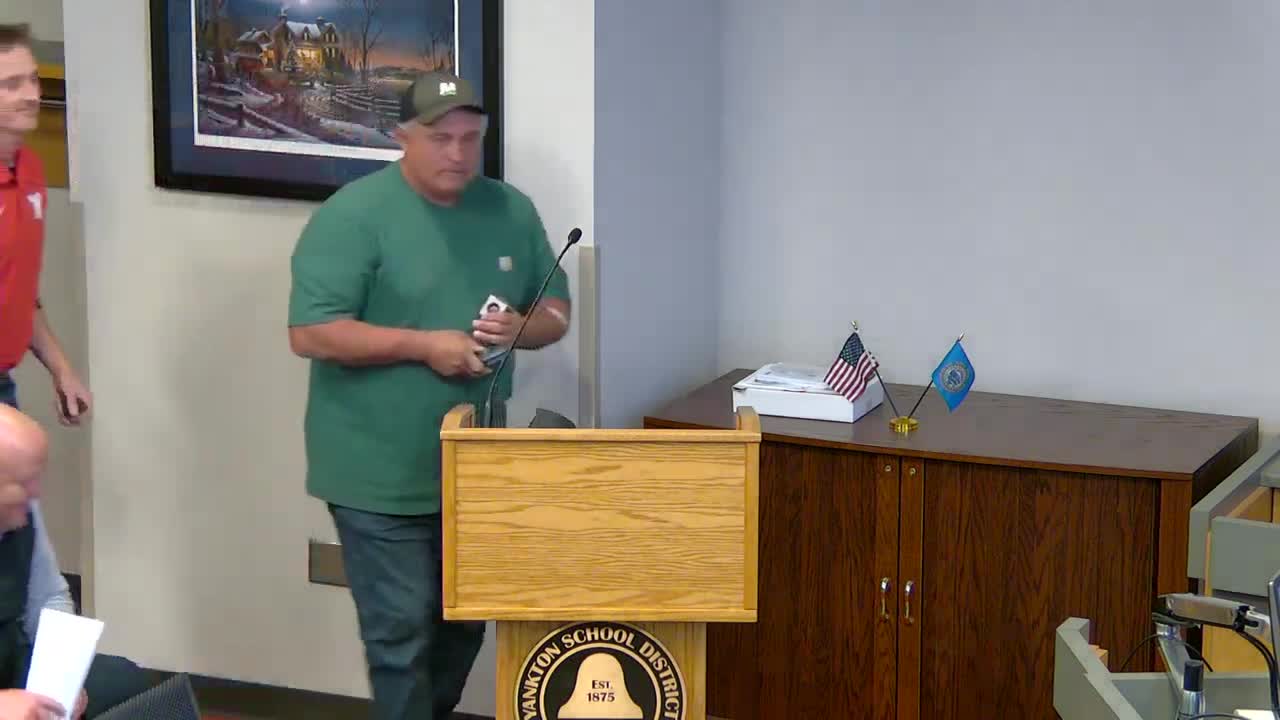Yankton schools use Perkins reserve grant to add fiber laser cutter to CTE labs
October 14, 2025 | Yankton School District 63-3, School Districts, South Dakota
This article was created by AI summarizing key points discussed. AI makes mistakes, so for full details and context, please refer to the video of the full meeting. Please report any errors so we can fix them. Report an error »

Yankton School District officials announced the district was awarded a Perkins reserve grant and used the funds to buy a fiber laser cutter for its CTE (career and technical education) program, district staff and teachers told the school board.
The laser, a higher-power device than the district’s existing 35-watt machine, can cut 11-gauge (about 1/8-inch) steel quickly and leave a smooth, slag-free edge, presenters said. Mr. Johnson, the head of the district’s CTE department, described the new cutter as “a thousand, a 1,500 watt laser compared to the 1 that we use over in the high school, which is a 35 watt,” and said the machine can finish parts with no material to remove.
School staff told the board the district applied in January for a Perkins reserve grant — part of Perkins funding that the state can set aside to support special CTE projects — and learned in late March that it had been awarded up to $50,000. Johnson and colleagues demonstrated videos and sample parts during the meeting and explained that the district purchased the machine with a $50,000 grant plus a $15,000 manufacturer discount, bringing the acquisition cost to about $45,000.
School leaders said the cutter will be used in advanced and introductory welding, intro to manufacturing and other CTE classes, and they plan cross-curricular uses such as cabinetry students making signs to mount on wood. Presenters showed examples created by students and explained software and workflow: designs can be generated in SketchUp, exported as DXF files, and run on the laser. Johnson said students converted an AI-generated fish into a DXF and cut it in about 10 minutes during the machine’s first week in use.
Staff discussed consumable costs and operating details: compressed oxygen is used for steel cutting, hydrogen is required for aluminum, and replaceable nozzles run about $25 each; a replacement laser lens was cited at $22. District staff said they have limited usage history because the machine had been installed and used only for about a week at the time of the presentation.
Presenters emphasized educational aims: faster, cleaner cuts let students complete projects in class that previously required multiple periods and manual finishing; teachers expect the equipment to increase student engagement and provide real-world connections to local manufacturing partners.
Board members asked about liability and whether students may bring personal projects; staff said district policy generally restricts students from working on outside parts that create liability risks. Staff also said the district will continue to seek cross-curricular projects and industry alignment as part of the grant’s goals.
The board received the presentation; the grant award and equipment purchase were described as part of the district’s CTE expansion and not recorded as a separate formal vote during this meeting.
The laser, a higher-power device than the district’s existing 35-watt machine, can cut 11-gauge (about 1/8-inch) steel quickly and leave a smooth, slag-free edge, presenters said. Mr. Johnson, the head of the district’s CTE department, described the new cutter as “a thousand, a 1,500 watt laser compared to the 1 that we use over in the high school, which is a 35 watt,” and said the machine can finish parts with no material to remove.
School staff told the board the district applied in January for a Perkins reserve grant — part of Perkins funding that the state can set aside to support special CTE projects — and learned in late March that it had been awarded up to $50,000. Johnson and colleagues demonstrated videos and sample parts during the meeting and explained that the district purchased the machine with a $50,000 grant plus a $15,000 manufacturer discount, bringing the acquisition cost to about $45,000.
School leaders said the cutter will be used in advanced and introductory welding, intro to manufacturing and other CTE classes, and they plan cross-curricular uses such as cabinetry students making signs to mount on wood. Presenters showed examples created by students and explained software and workflow: designs can be generated in SketchUp, exported as DXF files, and run on the laser. Johnson said students converted an AI-generated fish into a DXF and cut it in about 10 minutes during the machine’s first week in use.
Staff discussed consumable costs and operating details: compressed oxygen is used for steel cutting, hydrogen is required for aluminum, and replaceable nozzles run about $25 each; a replacement laser lens was cited at $22. District staff said they have limited usage history because the machine had been installed and used only for about a week at the time of the presentation.
Presenters emphasized educational aims: faster, cleaner cuts let students complete projects in class that previously required multiple periods and manual finishing; teachers expect the equipment to increase student engagement and provide real-world connections to local manufacturing partners.
Board members asked about liability and whether students may bring personal projects; staff said district policy generally restricts students from working on outside parts that create liability risks. Staff also said the district will continue to seek cross-curricular projects and industry alignment as part of the grant’s goals.
The board received the presentation; the grant award and equipment purchase were described as part of the district’s CTE expansion and not recorded as a separate formal vote during this meeting.
View full meeting
This article is based on a recent meeting—watch the full video and explore the complete transcript for deeper insights into the discussion.
View full meeting